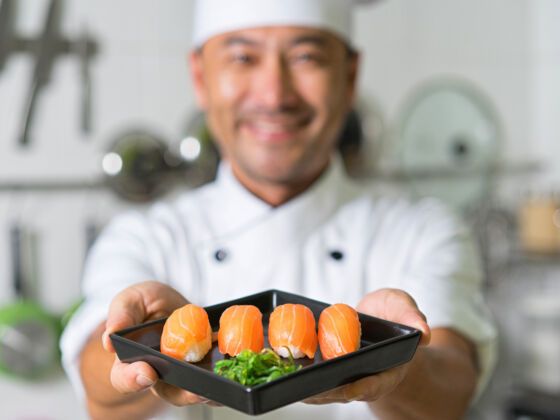Keep your sushi simple. Avoid rolls with mayonnaise or anything deep-fried.
If the highlight of your meal is a spicy tuna roll, you’re in trouble.
1. Pick Your Master Chef
Make no mistake: although sushi is often the main attraction in upscale Japanese restaurants, there is lots of lousy sushi out there. Let’s start from the bottom of the barrel.
